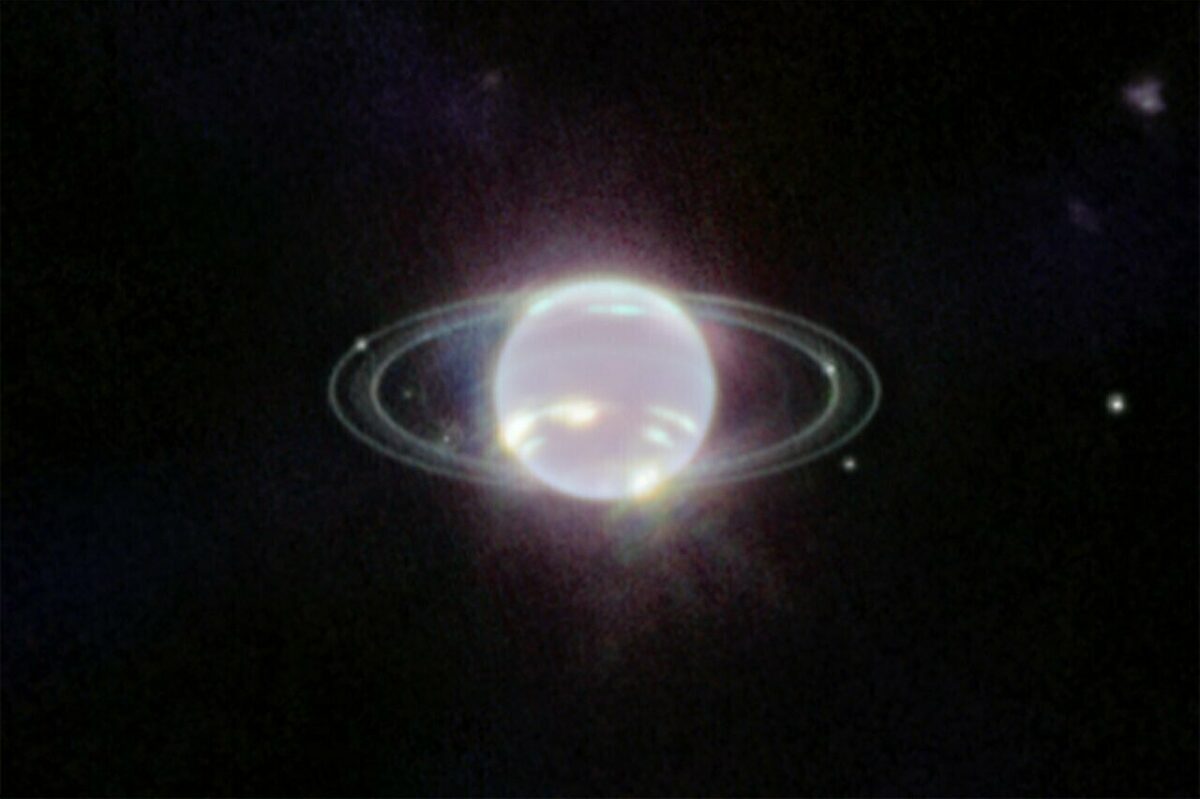Bruce Murray Space Image Library
Neptune from JWST

Neptune does not appear blue to JWST because its methane gas strongly absorbs near-infrared light. The planet is quite dark at JWST's wavelengths except where high-altitude clouds are present. These are visible in the as bright patches in the planet’s southern hemisphere. A thin line of brightness circling the planet’s equator could be a visual signature of global atmospheric circulation that powers Neptune’s winds and storms.


 Explore Worlds
Explore Worlds Find Life
Find Life Defend Earth
Defend Earth

